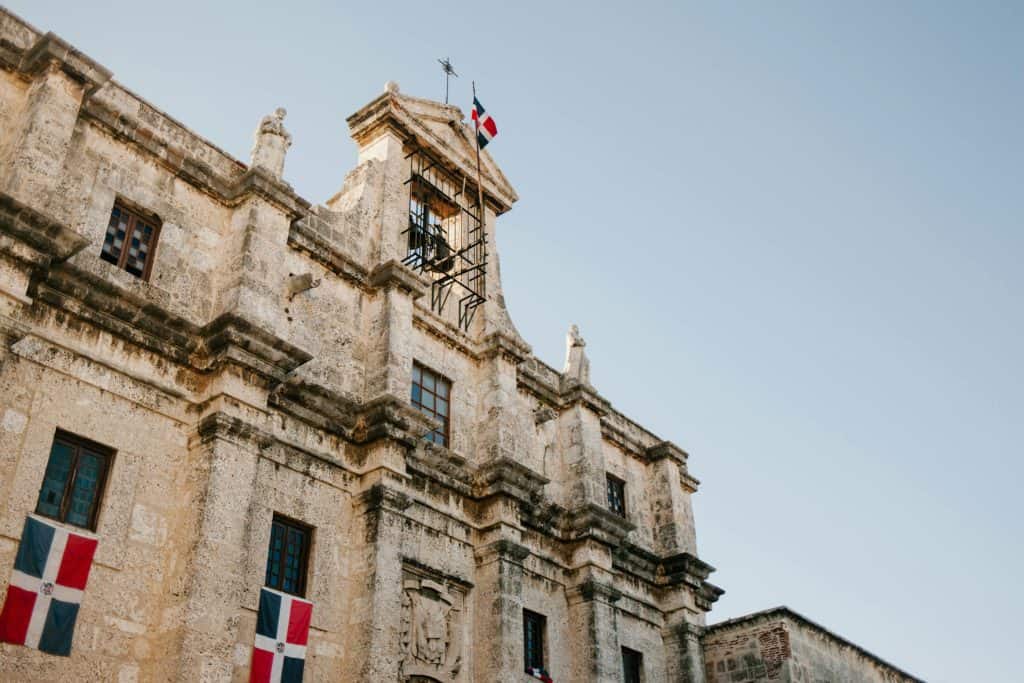El Punto de Partida: A Muddy Morning in Los Haitises
The story begins with red mud clinging to my boots and a stubborn sprinkle of Caribbean rain. I had driven three hours from Santo Domingo to the Los Haitises National Park entrance, craving solitude after a busy workweek. At dawn, the rangers lifted the wooden gate, and I caught sight of a battered placard that read “Sendero La Culebra – 2.4 km”. Ten years in the Dominican Republic have taught me that trail signs often hide cultural riddles. Still, on that particular morning I realized I was missing a piece: how to speak about trails with the same ease I order mangú for breakfast. That realization nudged me into a linguistic rabbit hole that would forever change how I learn Spanish—and, hopefully, how you will too.
Why Trails Make Spectacular Language Classrooms
Think about it: in the city you can muddle through with the polite, transactional Spanish every expat masters within months. Out in the countryside, however, you meet rangers, farmers, and guides whose vocabulary is earthy, regional, and often poetic. Each kilometer marker, each hand-painted arrow, becomes a reading comprehension exercise with added humidity. To learn Spanish as an expat in these moments is to trade neon-lit cafés for mahogany forests and roaring waterfalls. You listen to words echo against limestone walls; you ask for directions without the safety net of Google Maps. And because there might be a rope bridge between you and your ride home, motivation spikes higher than the mountain peak you are trying to find.
Dominican rangers, in particular, are guardians of oral micro-stories. They respectfully insert Taino vocabulary—batey, canoa, manacla—and sprinkle in African-influenced rhythms that make a simple warning feel like a lullaby. Colombia, where I vacation every few months, offers a different soundtrack: Andean crispness in Antioquia, coastal sing-song in Cartagena, and parche slang in Bogotá. Trekking between the two countries keeps my ear on high alert and forces me to refine, not just acquire, my Spanish. The jungle, in short, became the academy where I truly started to learn Spanish.
Decoding Dominican Signage One Word at a Time
Sendero, Camino, Ruta—Why the Distinction Matters
Dominican signs almost always favor sendero—literally “path”—over the more general camino, which suggests a road fit for vehicles. In Colombia, by contrast, you will frequently spot ruta ecológica. Knowing which term a ranger expects earns you instant credibility. Imagine asking, “¿Cuántos kilómetros tiene este camino?” in Los Haitises. The ranger might smirk, correct you gently—“Este sendero es corto, mi hermano”—and then decide you are green enough to need baby-sitting. Swap in the right noun, and suddenly you are an equal travel conspirator, not a tourist to be coddled.
Formality, Trust, and the Magic of Don
In the Dominican Republic, peppering a sentence with don or doña can tilt a conversation from transactional to chummy. “Don Martín, ¿el sendero se pone resbaloso después de la lluvia?” lands softer than a bare “¿Se pone resbaloso?”. In Colombia, however, over-using titles may sound stiff, especially in youthful Bogotá circles. To continually learn Spanish, notice how the same word toggles between intimacy and distance depending on geography. When in doubt, I lead with formality, then dial it down the moment someone invites me to use tú.
Examples from the Field
Spanish: “El sendero está cerrado por mantenimiento, pero hay un atajo por el río.”
English: “The trail is closed for maintenance, but there’s a shortcut along the river.”
Context: Dominican ranger explaining a temporary detour; note how atajo implies informal permission rather than an official route.
Spanish: “Ojo, parce, la ruta al páramo se nubla rápido.”
English: “Careful, buddy, the route to the páramo fogs up quickly.”
Context: Colombian guide in Antioquia; the friendly parce marks the sentence as distinctly Colombian.
Spanish: “Caminen pegados a la baranda si no quieren un resbalón feo.”
English: “Walk close to the handrail if you don’t want a nasty slip.”
Context: Universal advice, but the plural command caminen is common in group briefings throughout Latin America.
Cross-Pollinating Dominican and Colombian Ears
After my Los Haitises revelation, I started keeping an audio diary. Anytime I misread a sign or fumbled a question, I recorded the correct phrasing. On my next Colombian trip, I tested those phrases in Tayrona National Park. The experiment proved delightful: Colombians recognized the Dominican cadence, laughed, and taught me local variants. They explained that while Dominicans might say “Nos vemos a la bajada” to promise a chat after descending, Colombians prefer “Nos pillamos a la bajada”. Swapping one verb sharpened my sensitivity to micro-tones and made me continually learn Spanish in stereo, not mono.
This bilingual ping-pong also unclenches the jaw. Dominicans swallow consonants—“vamo’” instead of vamos—while Colombians articulate each syllable almost like radio hosts. Training your ear to switch gears in real time resembles adjusting a camera lens from humid jungle close-ups to crisp Andean panoramas. You begin to spot the similarities that bind: shared idioms about rain, identical worry about unpredictable rivers, and an old, almost whispered awe of the land. Through those parallels you not only learn Spanish; you internalize the cultural heartbeat that keeps vocabulary alive.
Example Conversation: “Preguntando por el Sendero Perdido”
Spanish (DR): “Buenas, jefe, ¿ese sendero llega hasta la cascada de agua dulce?”
English: “Good morning, boss, does that trail get all the way to the fresh-water waterfall?”
Note: jefe is warm Dominican slang; informal tú vibe.
Spanish (Colombia): “Claro, parcero, pero después del puente toca subir duro.”
English: “Sure, buddy, but after the bridge you’ve got a steep climb.”
Note: parcero is Medellín-style slang.
Spanish (DR): “¿Y la subida es muy empinada o se puede coger suave?”
English: “Is the incline very steep, or can we take it easy?”
Note: Verb coger is perfectly neutral in the DR but may raise eyebrows in Mexico.
Spanish (Colombia, formal): “Si usted quiere una ruta más tranquila, le recomiendo el camino del mirador.”
English: “If you’d like a calmer route, I recommend the lookout trail.”
Note: Switching to usted elevates formality—usable with older rangers anywhere.
Spanish (DR): “Pues vámonos entonces; si llueve, volvemos por la vereda.”
English: “Alright then, let’s go; if it rains, we’ll come back via the footpath.”
Note: vereda in the DR means a small path; in Colombia it can also denote a rural township.
Spanish Vocabulary
| Spanish | English | Usage Tip |
|---|---|---|
| Sendero | Trail / Path | Preferred term on Dominican signs; gender is masculine. |
| Camino | Road / Way | Broader term; implies possible vehicle access. |
| Ruta | Route | Common on Colombian eco-signage; often paired with ecológica. |
| Atajo | Shortcut | Suggests informal knowledge; ask if it’s officially allowed. |
| Bajada | Descent | Pair with verbs like nos vemos or nos pillamos. |
| Empinado | Steep | Adjective; interchangeable with cuesta arriba. |
| Baranda | Handrail | Used in safety warnings; also barandilla in Spain. |
| Resbaloso | Slippery | More common than resbaladizo in the DR. |
| Vereda | Footpath / Rural village | Double meaning in Colombia; clarify context. |
Reflecting on Bouncing Between Islands and Andes
Every time I board a flight from Santo Domingo to Bogotá, my accent packs its own suitcase. It carries lazy Dominican syllables and, somewhere inside a shoe, a crisp Colombian trill waiting to be unpacked. The rhythm swap keeps my brain limber. One month I am dropping final “s,” the next I am pronouncing them like pearls. That constant toggling forces me to learn Spanish actively rather than coast on habit. It is the linguistic equivalent of cross-training: the muscles you build on Dominican dance floors complement the lung capacity you need for Colombian hikes.
So the next time you spot a wooden sign that says sendero, use it as an invitation. Ask the ranger a follow-up question; savor the regional slang that rides shotgun with every answer. Compare what you hear in Jarabacoa with what you’ll hear in Cocora Valley. Write it down, swap notes with fellow wanderers, and let the forest be your professor. And when you finally kick off muddy boots at the end of the day, swing by the comment section. Share the word that saved you from a wrong turn, the accent twist that made you grin, or the slang that stitched two cultures together. Learning a language is a collective hike, and every footprint helps someone else find the trailhead.
Until the next trek, I’ll be practicing rolled r’s somewhere between a Dominican mangrove and a Colombian páramo. Nos vemos on the sendero, amigos.


